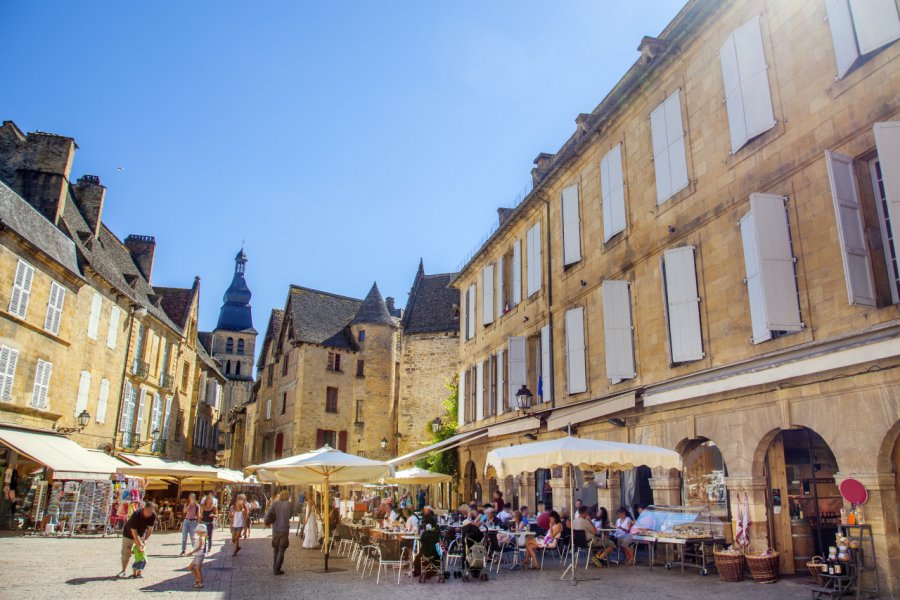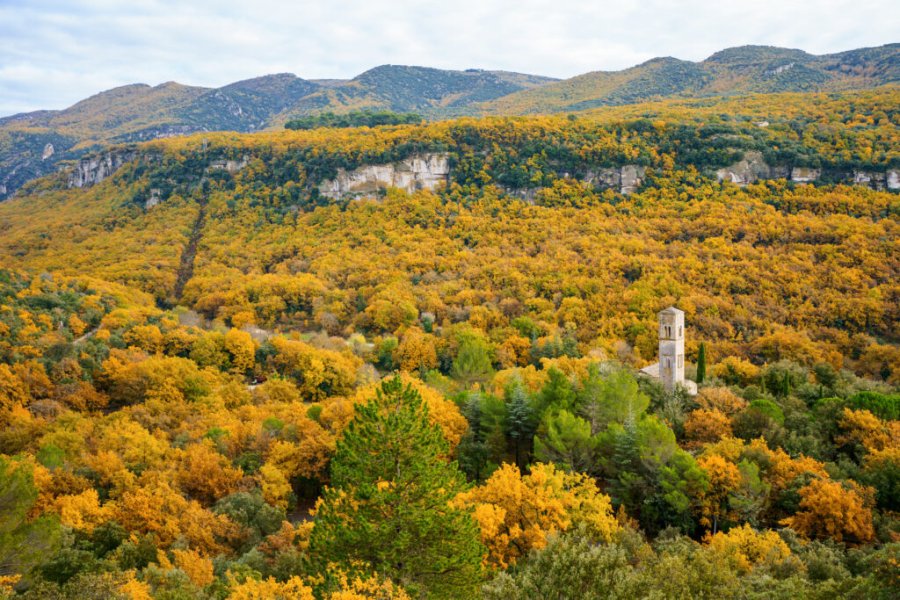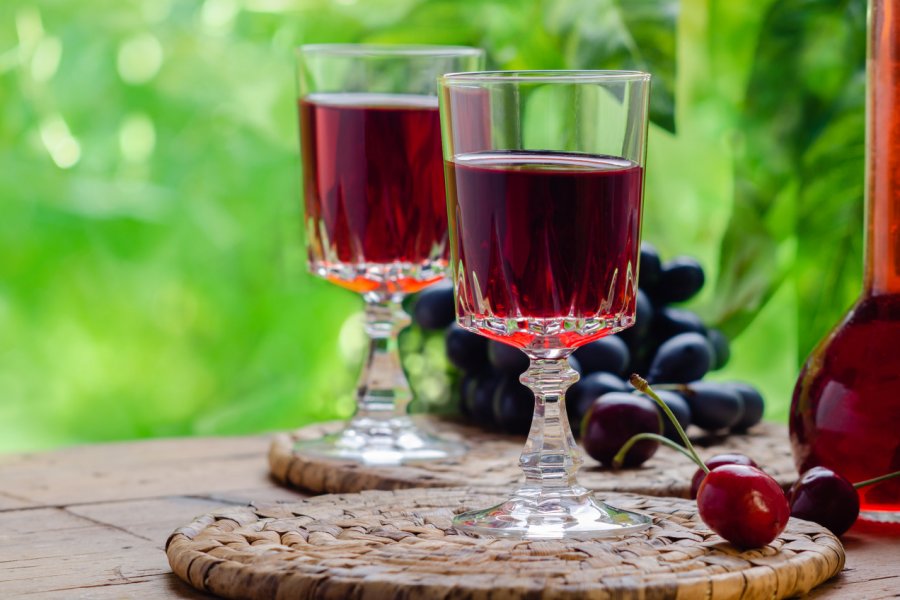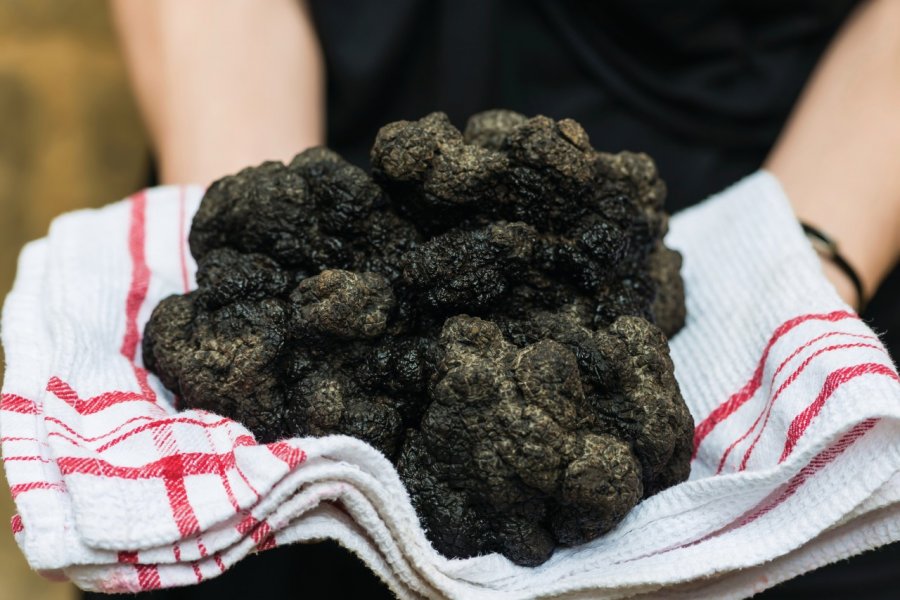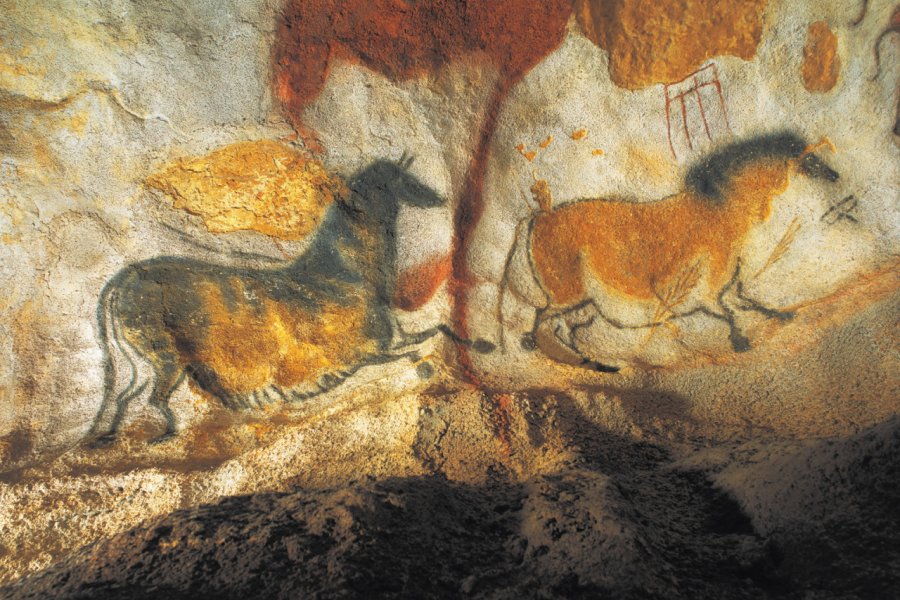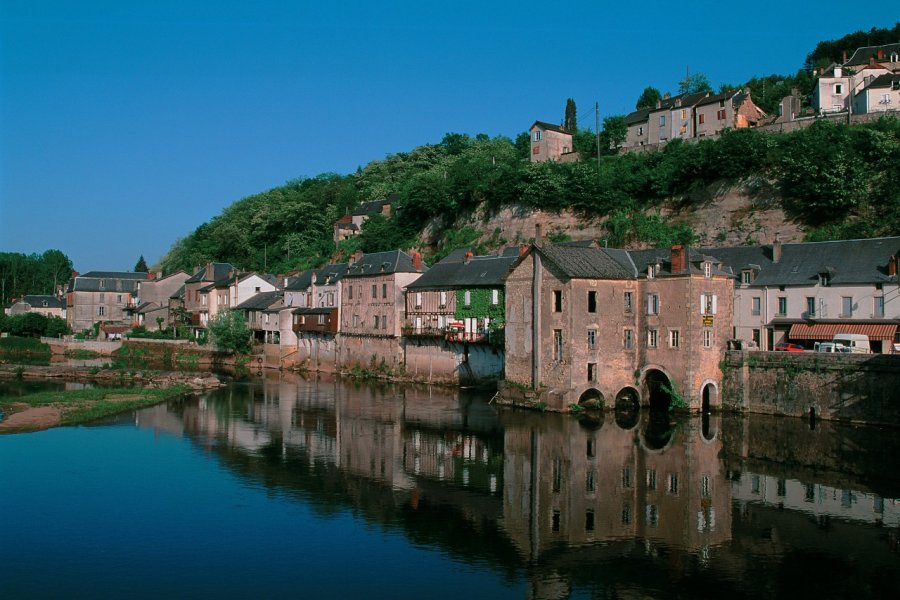Travel guide Dordogne
The Dordogne department is made up of 4 Périgord regions, each with its own color and identity: the Purple in the south, reminiscent of the Bergerac wines, the White in the center, a land of limestone plateaus, the Green in the north with its rivers, and the Black, rich with its forests and truffles. Cradle of prehistory, the department has major sites that are found in all tourist guides: Les Eyzies known for its many caves and its National Museum of Prehistory, and especially Lascaux IV, an almost complete replica of the Lascaux cave with magnificent cave paintings. It is also the country of a thousand and one castles. Many fortresses are perched on rocks like Beynac and Castelnaud, others dominate the countryside like Hautefort and its magnificent gardens or the Milandes, former property of Josephine Baker. Brantôme-en-Périgord is nicknamed the "Green Venice of Périgord". Sarlat, birthplace of La Boétie, is adorned with superb private mansions from the 15th and 16th centuries and Domme offers a breathtaking view of the Dordogne valley. Nature also has its place. Hiking is practiced on 200 km of GR, on the road to Santiago de Compostela or on footpaths open to mountain bikes. Thanks to its rivers and streams, the department is rich in nautical activities, especially on the Vézère, the Dordogne and the Dronne. The Périgord is also a land of delicacies. Truffles, strawberries, ceps, walnuts, foie gras and Bergerac wines make it a Mecca of gastronomy.
What to see, what to do Dordogne?
-
Book an activity
-
Customized travel
- The most beautiful cities Dordogne
When to go Dordogne ?
When to go to the Dordogne ? The Dordogne remains an ideal family destination all year round, but the high season is summer because many sites, accommodations and restaurants close in winter, especially in the Périgord Noir. Spring and autumn are to be preferred, not only are there fewer people but the prices of accommodation drop drastically. On the other hand, the Dordogne often benefits from a mild weather during the inter-seasons which are never very cold. In the summer, the tourist manna is concentrated especially in the Périgord Noir which offers multiple activities: swimming, canoeing on very crowded rivers, visits of heritage and caves, hiking. There are many events and festivals. Not to be missed on thefirst weekend of July, the Félibrée. It is a big Occitan festival organized each year in a different town. In Nontron, the knives are sharpened at the beginning of August with craftsmen and designers coming from all over France. At the end of July, the International Mime Festival invades Périgueux while Sarlat welcomes each year more than 7,000 spectators at the end of July and the beginning of August for the Sarlat Theater Games Festival. At the end of July, Montignac takes on the international folklore with its festival Cultures au cœur. The concerts of the Festival du Périgord noir take place from July to October in the Romanesque churches of various villages. The sportsmen can try the 100 kilometers of Belvès on the3rd weekend of April. As for the gourmets, they will be delighted with the producers' markets on summer evenings, the fat and truffle markets from October to March and the truffle festival in Sorges and Rigueux in January.
Suggested addresses Dordogne
Travel Dordogne
-
Find a hotel
-
Car Rental
-
Find a local agency
Le Périgord se prête à tous les types de voyages, des courtes escapades aux longues vacances, en itinérance ou en étoilés. Si vous voulez rayonner dans tout le département, choisissez un point d'attache central, idéalement Périgueux et ses alentours. Tous les points d’intérêt du Périgord sont accessibles en 1h/1h30. Destination nature, le Périgord se prête aux activités extérieures : pêche en étang ou en rivière, balades en canoë ou en gabarre, randonnées à pied ou à vélo... C'est aussi une destination familiale, où les enfants apprécieront les légendes, les châteaux, les grottes et les aventures en plein air. De multiples courts séjours sont possibles, sur des thématiques particulières : 4 jours au fil de l'eau en canoë avec nuitées en camping, road trip illimité en camping car, weekend détente et nature avec nuitée dans les arbres, séjours gourmands avec des ateliers autour du canard ou de la truffe. Les possibilités sont infinies.
Find unique Stay Offers with our Partners
Discover the bike tours Dordogne
Featured articles Dordogne
Events
Discover Dordogne
It's definitely a favorite destination! Rooted in its terroir and traditions, Périgord is nonetheless known and appreciated the world over for its landscapes, its history and, above all, its gastronomy. The region has preserved an identity firmly rooted in its land, but one that is now nourished by a renewed interest in simple, genuine, natural things. The Dordogne, a department with a sense of welcome, festivity and sharing, as evidenced by its host of festivals. Rich in contrasts and heritage, from ornate caves and castles to forests and rivers, nature is a rare bounty. It offers visitors grandiose backdrops for outdoor activities, on land or water: whatever your desires, one of the 4 Périgords will be able to satisfy them! And of course, the famous Périgord gastronomy will delight even the most demanding taste buds...
Pictures and images Dordogne
The 12 keywords Dordogne
1. # Blanche
Blanche is the brandy obtained from the grape marc, also called drop or fine. It is often perfectly translucent, but can be colored after a passage in oak barrels. Note that in Périgord, brandy was made with all the local fruits, especially mirabelle plum and cherry, especially in order not to waste.
2. # Buffadou
It is a traditional "blower" to fan the fire. It is a long wooden tube, in which one blows to direct the air towards a precise place of the hearth that one had lit. A remarkably efficient precision tool, its use can sometimes produce a farting noise that does not fail to amuse young and old alike!
3. # Cavage

The word cavage is derived from the Latin cavus which means hollow. It gave the words cavern, cavity. The verb caver is borrowed from the Latin cavare which means to dig. It is a vocabulary now associated with truffles. To caver is to extract the truffle from the ground. The caveur is the person who looks for it using the cavadou, or truffle pick.
4. # Chabròl
Faire chabrot, or chabròl in Occitan, is a local custom which consists of adding red wine to the plate to dilute the liquid when there is a soup or soup stock left. The idea is then to bring the whole thing to the mouth, and to swallow it in large gulps, making as much noise as possible. No, that's a grandfather joke!
5. # Cingle

The term "cingle" represents a hill that follows the meanders of the Dordogne, Vézère or Lot rivers. Its slope facing the river is generally steep. From Trémolat, you will admire a unique panorama on the cingle of the Dordogne. Moreover, the term of cingle also indicates a large snake, reptile living in the wood.
6. # Gabarre

The gabarre, from the Occitan gabarra, was a flat-bottomed boat called a "sol", with a shallow draught, which was used to transport goods. The Dordogne River thus became a primary commercial route between the Périgord and the Atlantic coast. It made the wealth of the merchants by conveying wine, wood, minerals and food.
7. # Gouyassou
It's the commonly-used Frenchization of an Occitan term for a little boy. The term is declined into gouya for teenager and gouyate for teenage girl. Both terms have somewhat pejorative connotations in their contemporary usage. Before being a gouyassou, the youngster is a drôle and the girl a droléta. So be careful.
8. # Jimbourat
In the not so distant past, each family killed its pig between Christmas and February. Then, the neighbors would come and dip the jimbourat, the broth used to cook the pigs, in which vegetables and bones were simmering. This broth was poured on slices of bread and made a very fatty and comforting soup, for a nice moment of conviviality.
9. # Lauzes

It is the roofing system, specific to the traditional dwellings of the Périgord Noir and to the dry stone huts in the vernacular architecture. The lauzes are flat stones, roughly flattened. The basic stone is limestone. There are still craftsmen in the Périgord who are able to make this type of roofing.
10. Meita se, meita pork
"Half dogs, half pigs". This expression, far from being an insult, was used to designate the Périgourdins, referring to their resourcefulness during the struggle between the State and the Caussenards. Taxes, salt taxes and requisitions were at the origin of this insurrection. It was not good to be a tax collector at that time!
11. # Trempil
Summer snack, which consisted in drinking a bowl of red wine cut with ice water and sweetened, in which we dipped bread. The dip had the property to requinish, satiate, refresh and quench the thirst at the same time, for adults as well as for children at snack time. Other times, other customs... far from the food industry.
12. # Verjus
Verjuice is the very acid juice extracted from grapes that have not had time to ripen. In the kitchen, it was a good substitute for lemon juice (rare here in the past) or vinegar in vinaigrettes, mustards, in the preparation of meat or fish dishes and sauces. It was emblematic of the traditional Perigordian cuisine.
You are from here, if...
If you say "rapiette" to designate a lizard. An Occitan word par excellence, you won't hear it anywhere else, unless it's been stolen from us.
If you eat bread with your pasta and each of your dishes. The Perigordian has a solid appetite and this is not a local legend.
If your heart beats for the oval ball. Here, when you are little, you play ball, when you are big, you play rugby.
If for you cooking is second nature. You buy your raw foie gras at the market and you make your own winter preserves. When you were a child, your family also "made" the pig, which was sometimes called "le Monsieur" in some farms. That's how much respect we had for the animal that provided the meat for the year.
If you say "Cabanes" and not "Bories", to designate these rural constructions lining the formerly cultivated lands along your hiking trails.
If you like to tease those who have the sharp accent that you have managed to lose.
Other destinations Dordogne
- Les Eyzies
- Sarlat-La-Canéda
- Domme
- Périgueux
- Bourdeilles
- Beynac-Et-Cazenac
- Terrasson-Lavilledieu
- Brantôme-En-Périgord
- Bergerac
- Siorac-En-Périgord
- La Roque-Gageac
- Hautefort
- Le Buisson-De-Cadouin
- Eymet
- Le Bugue
- Monpazier
- Biron
- Antonne-Et-Trigonant
- Champagnac-De-Belair
- Monbazillac
- Montignac
- Mussidan
- Sorges Et Ligueux En Périgord
- Lanquais
- Echourgnac
- Excideuil
- Ribérac
- Issigeac
- Trémolat
- Nontron

